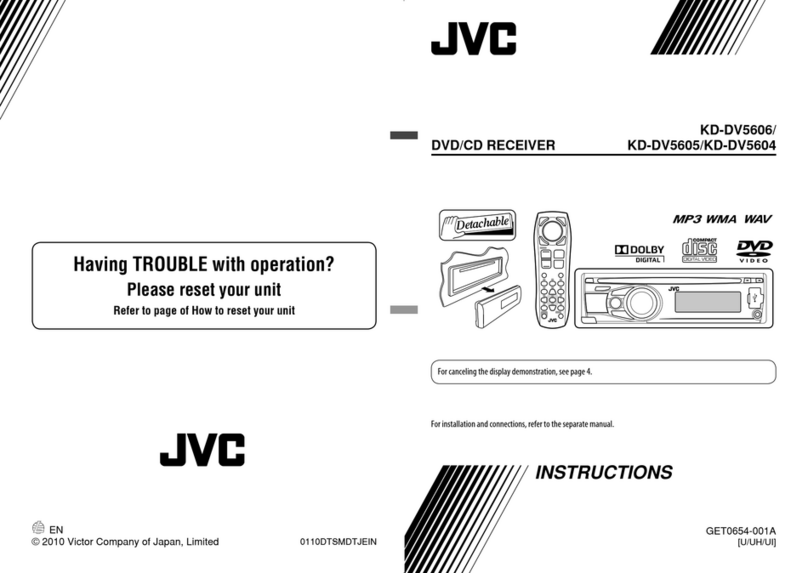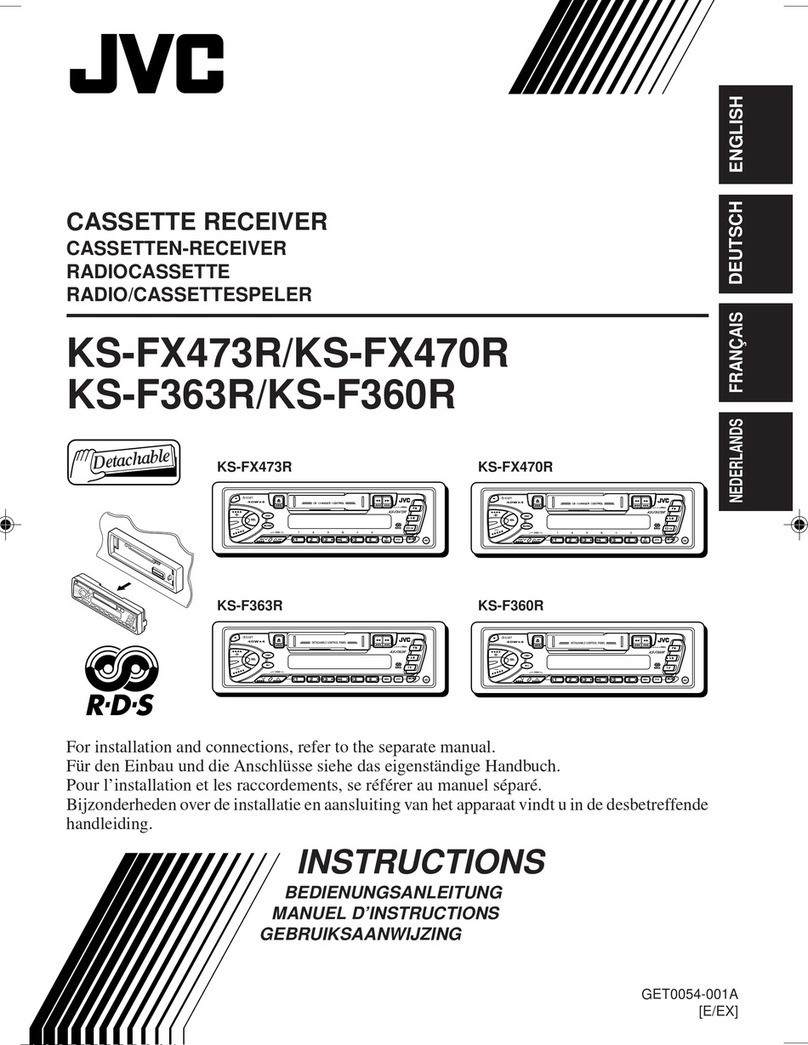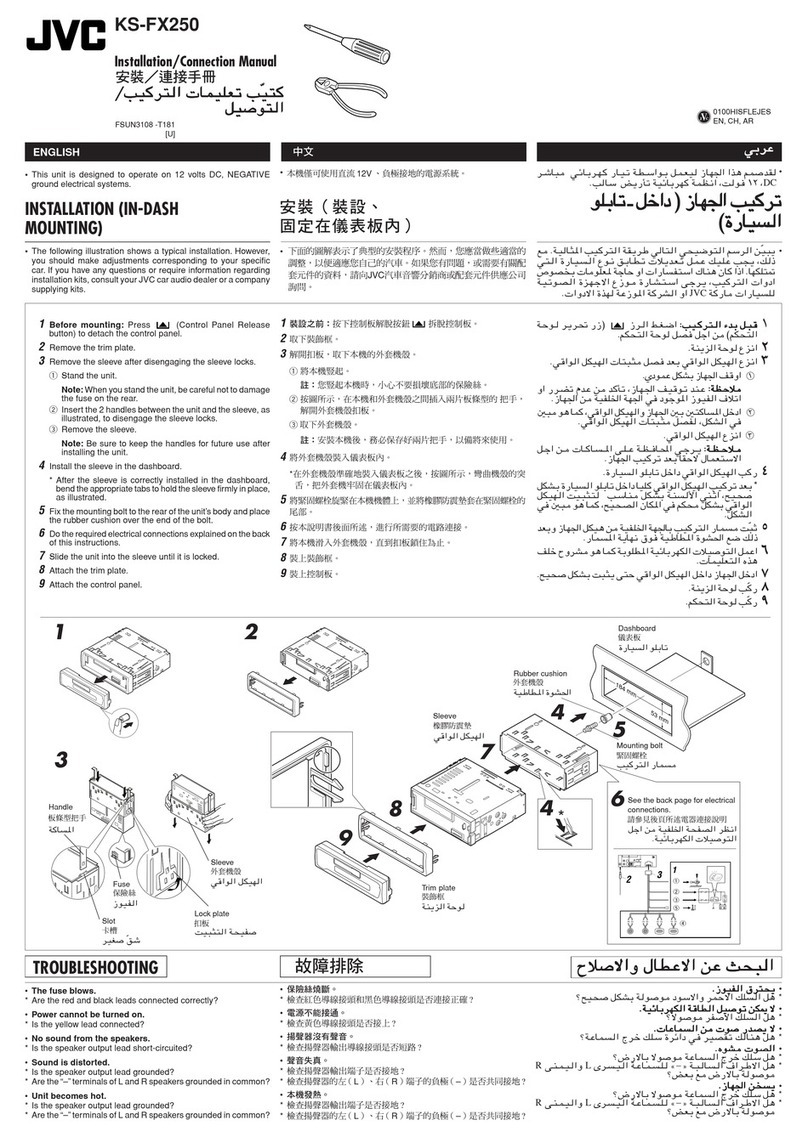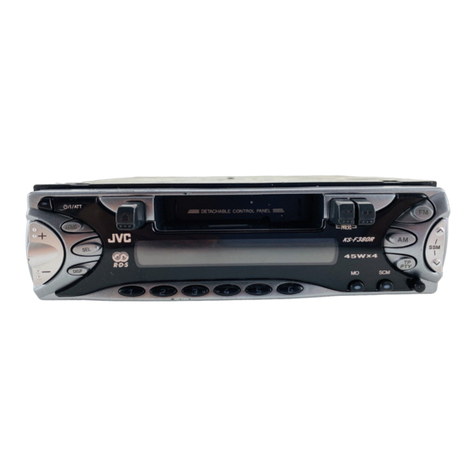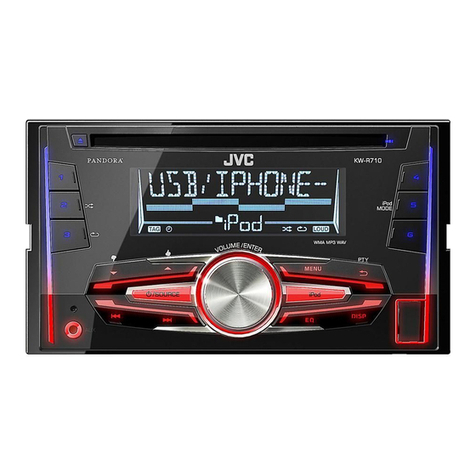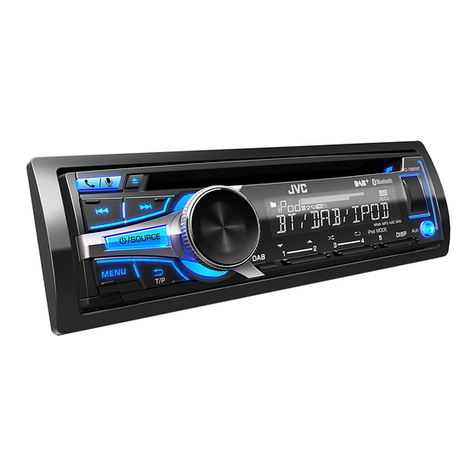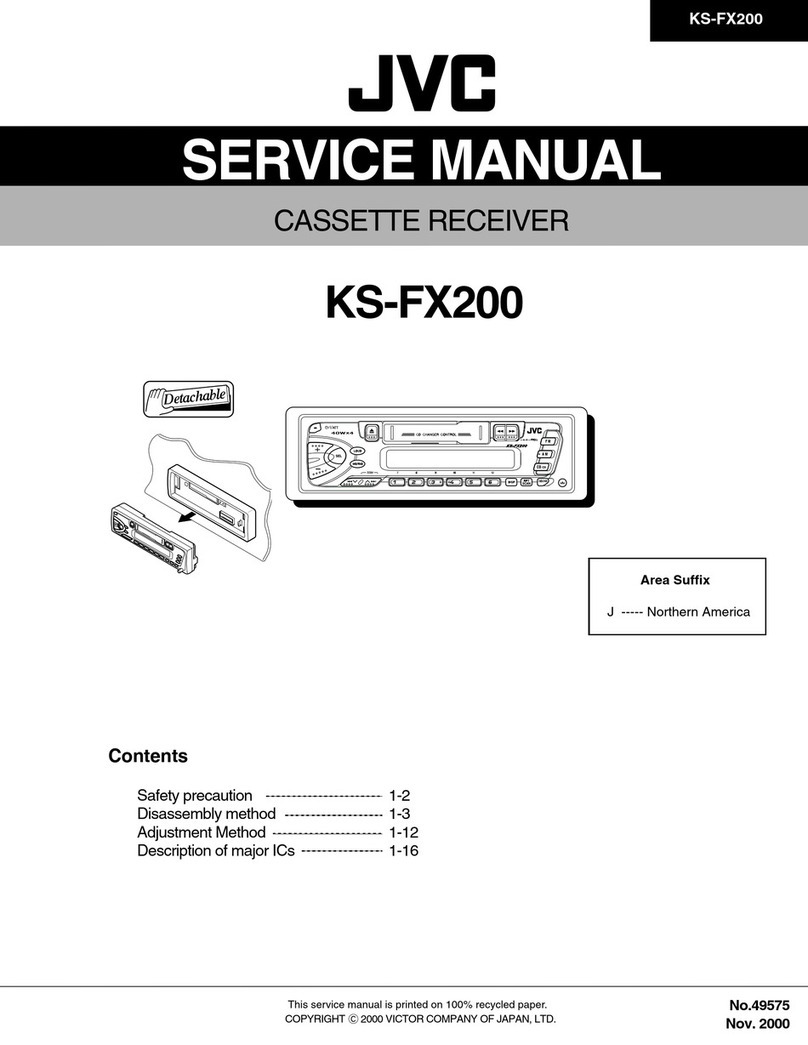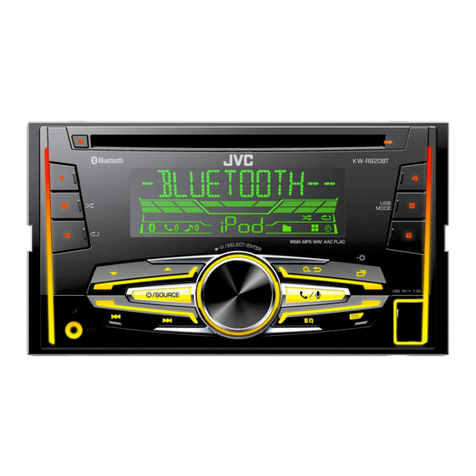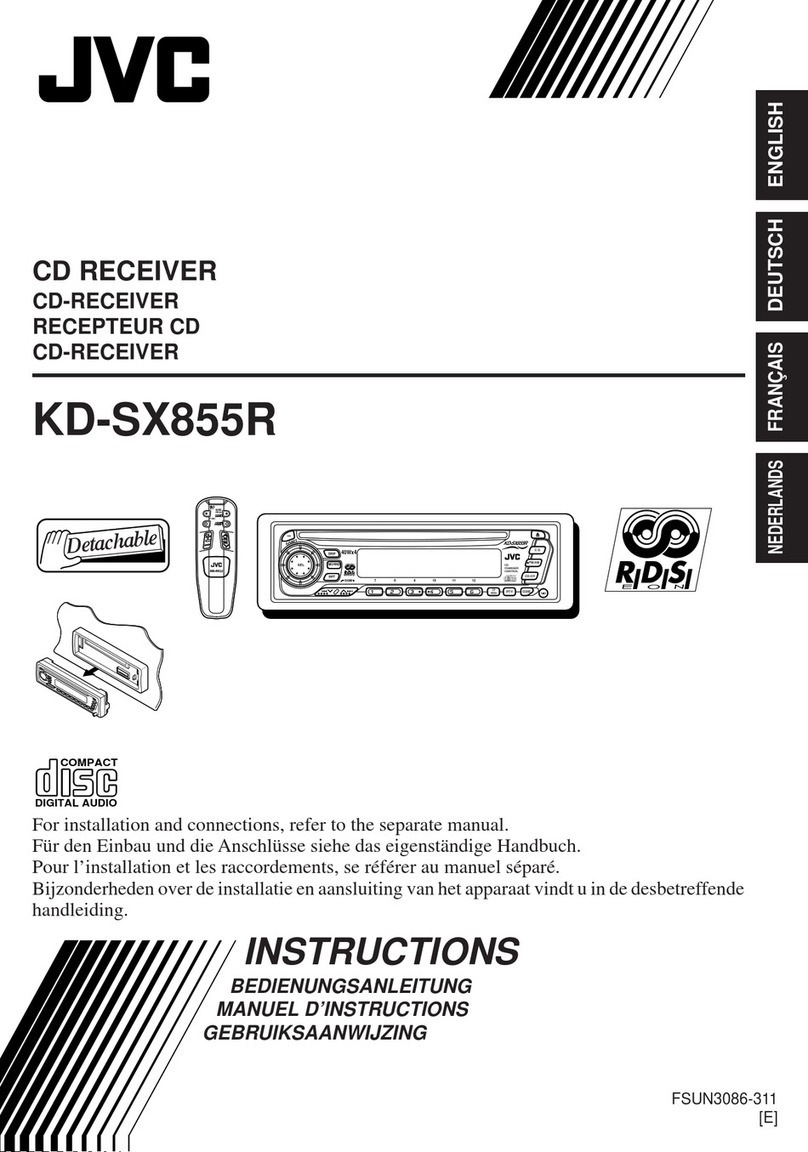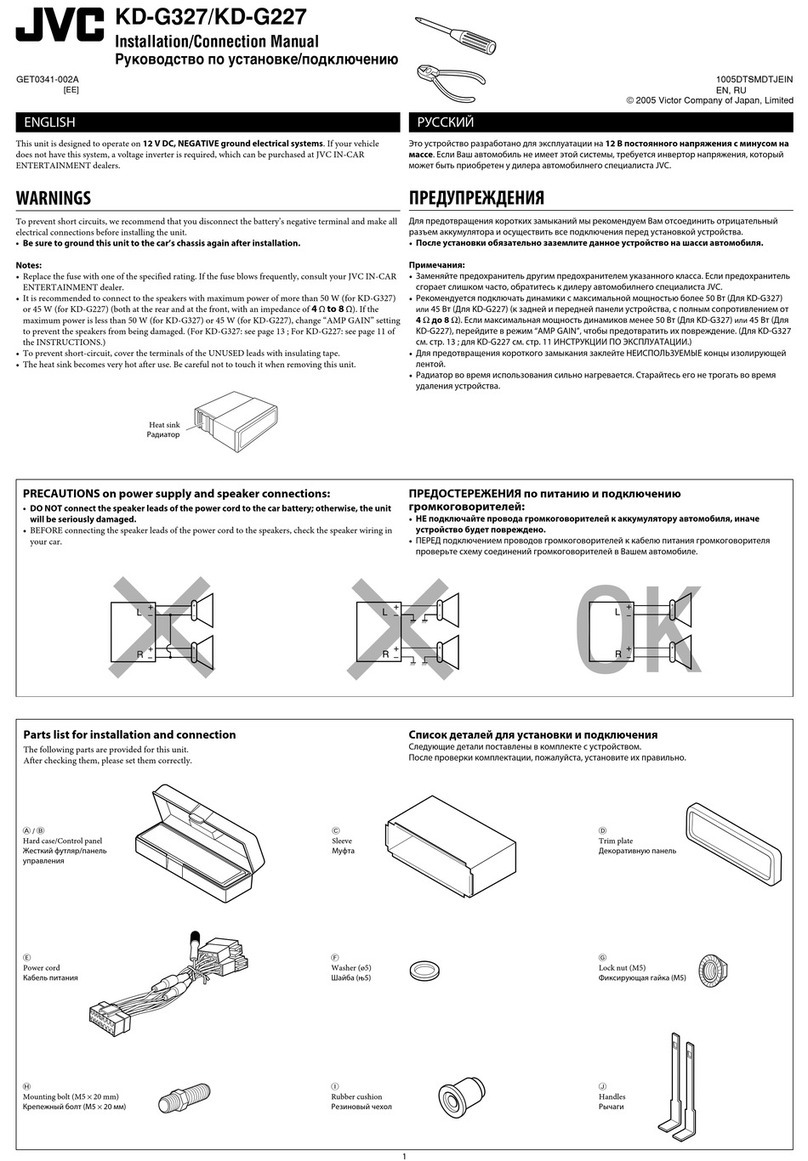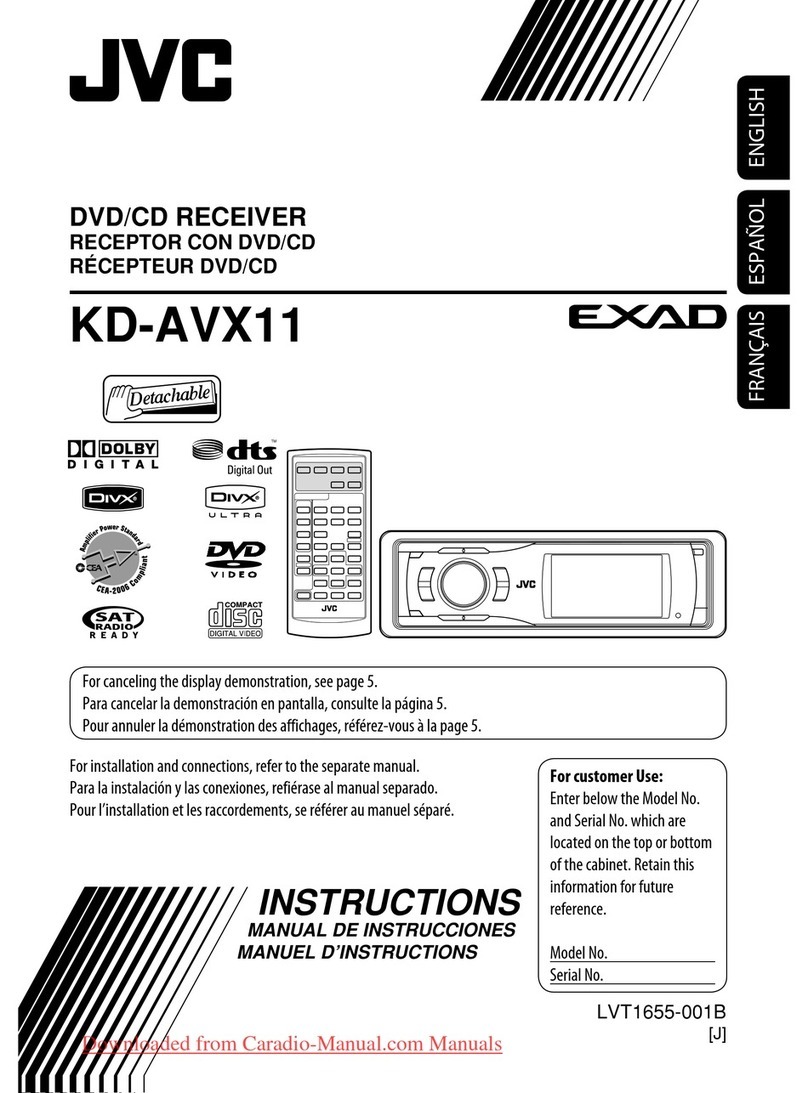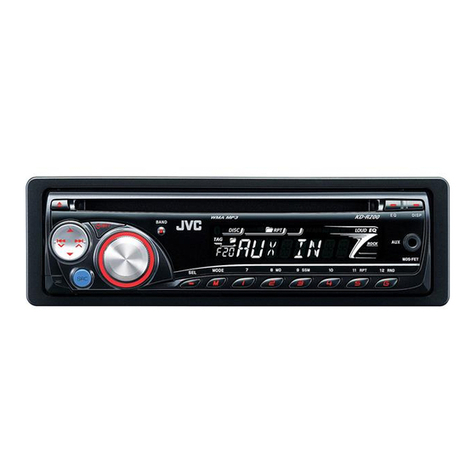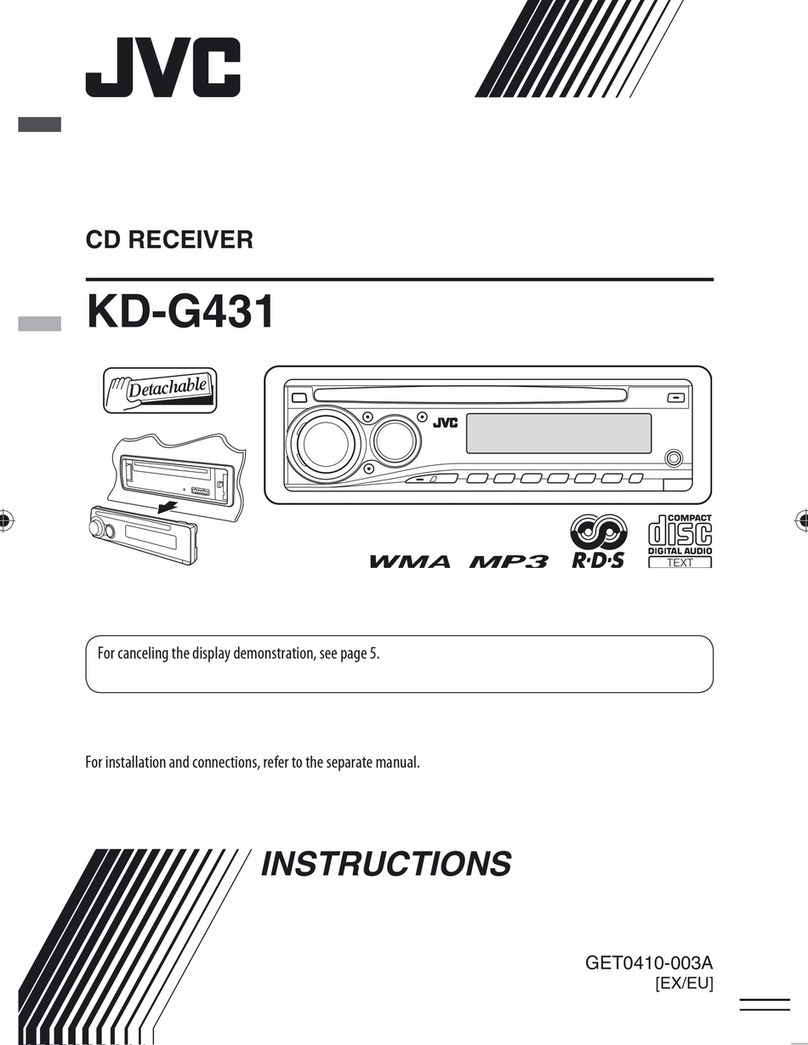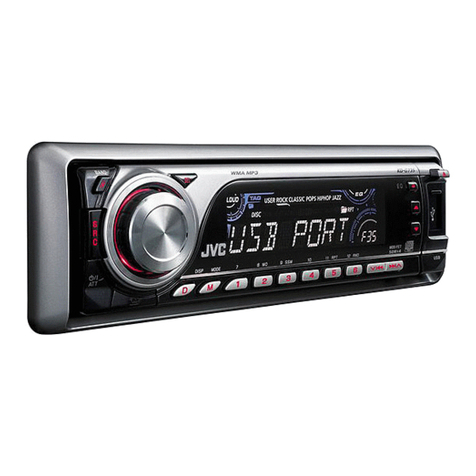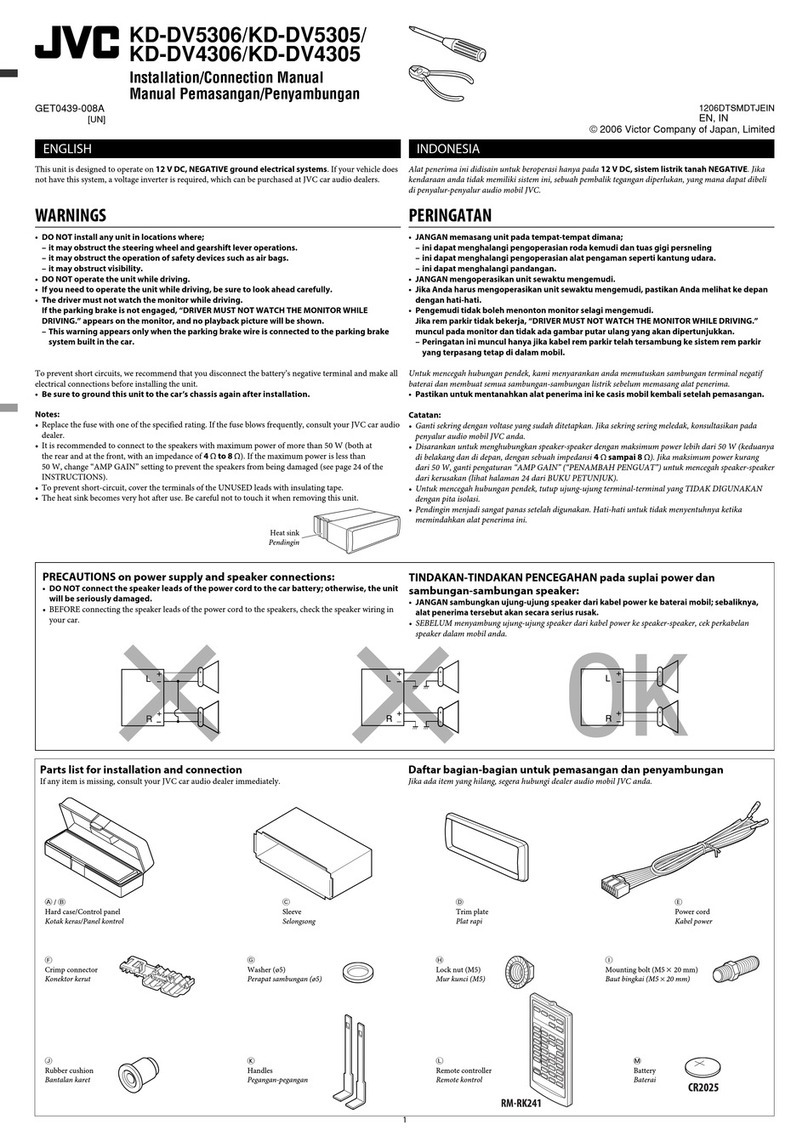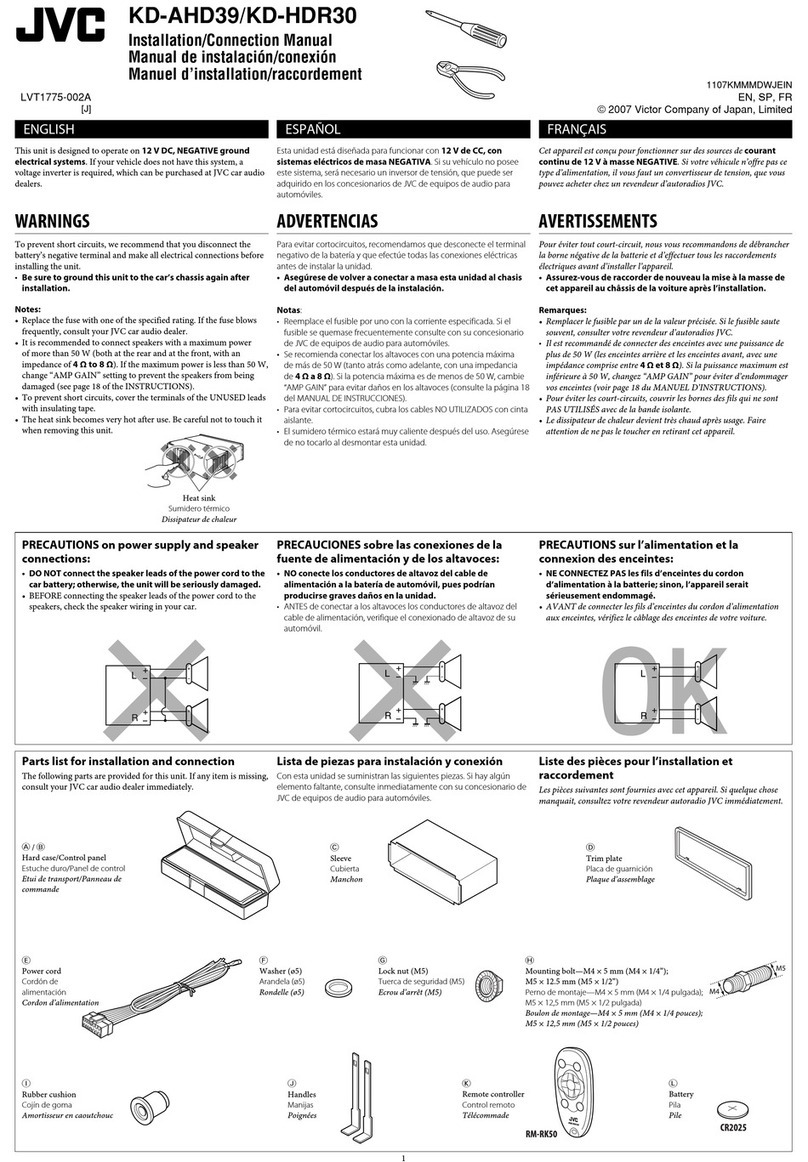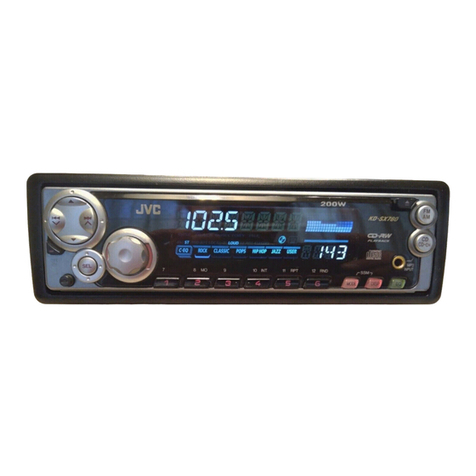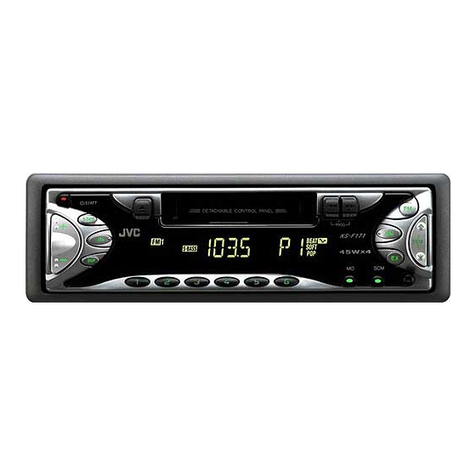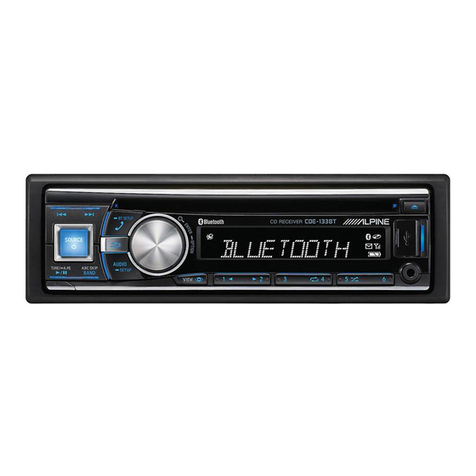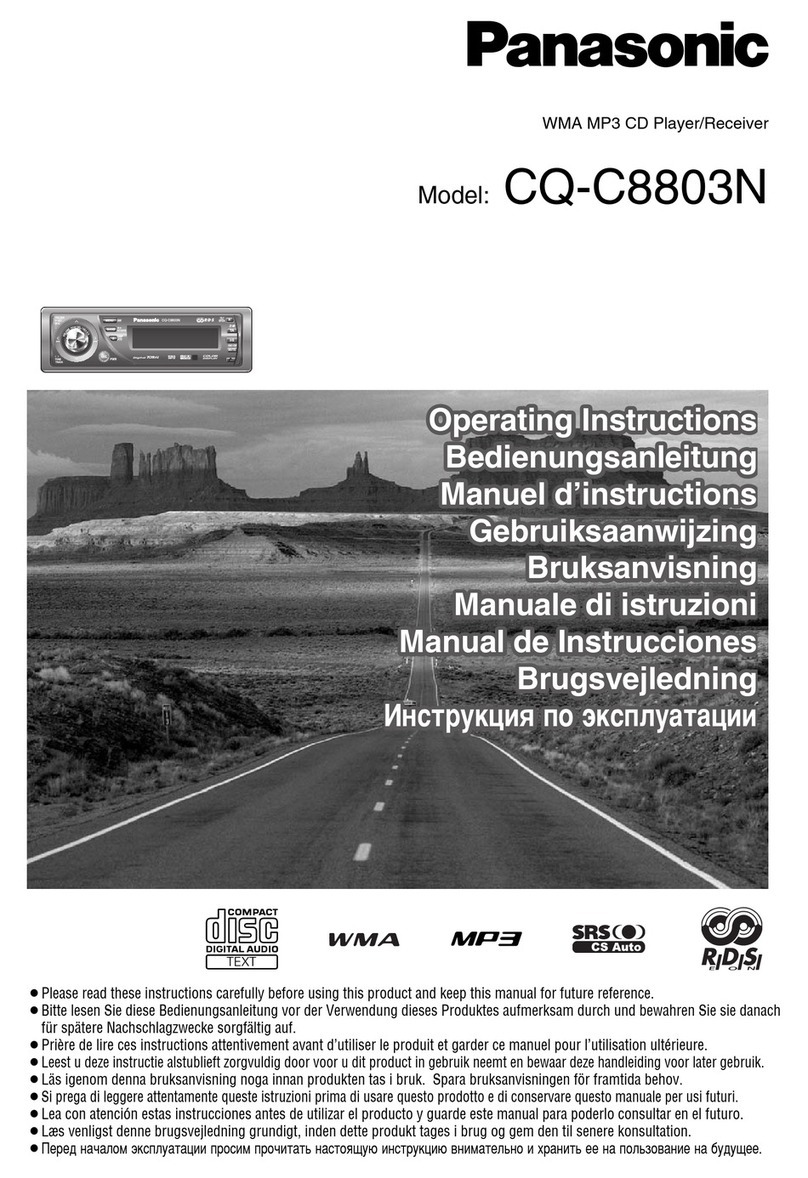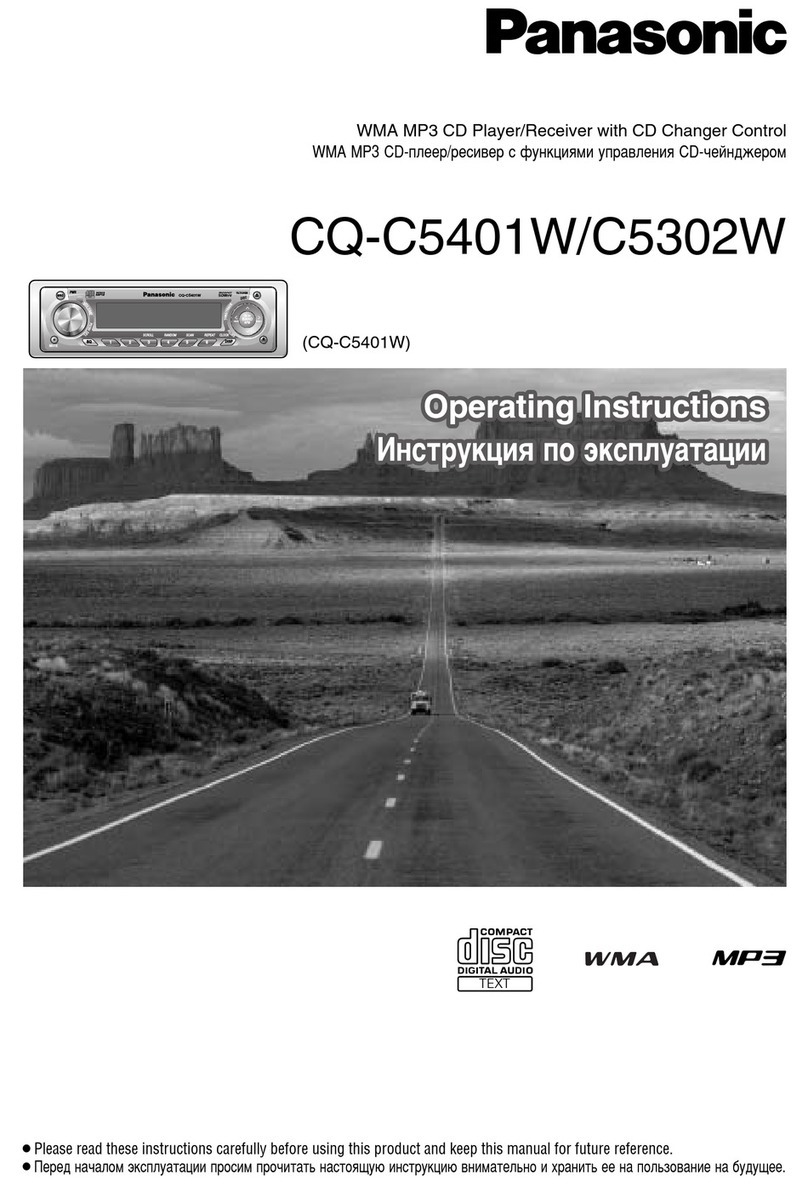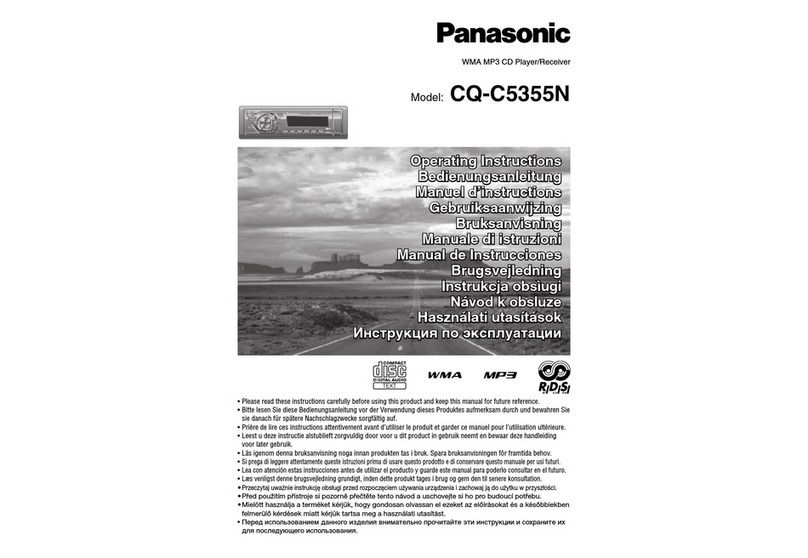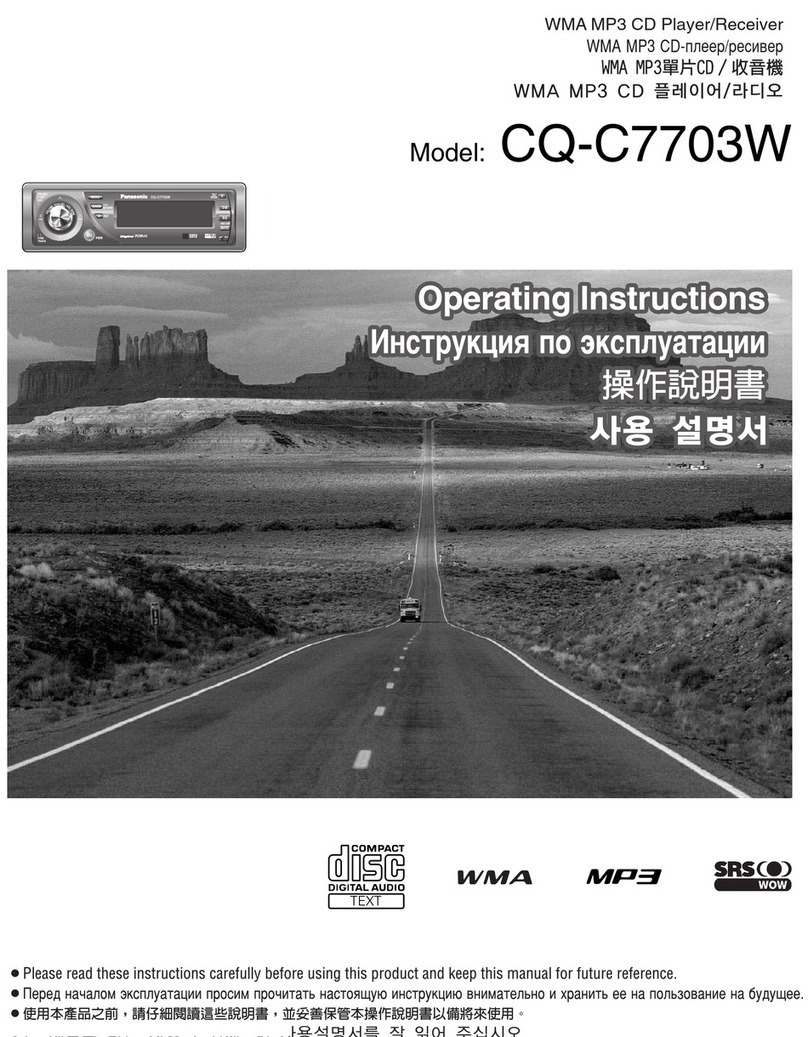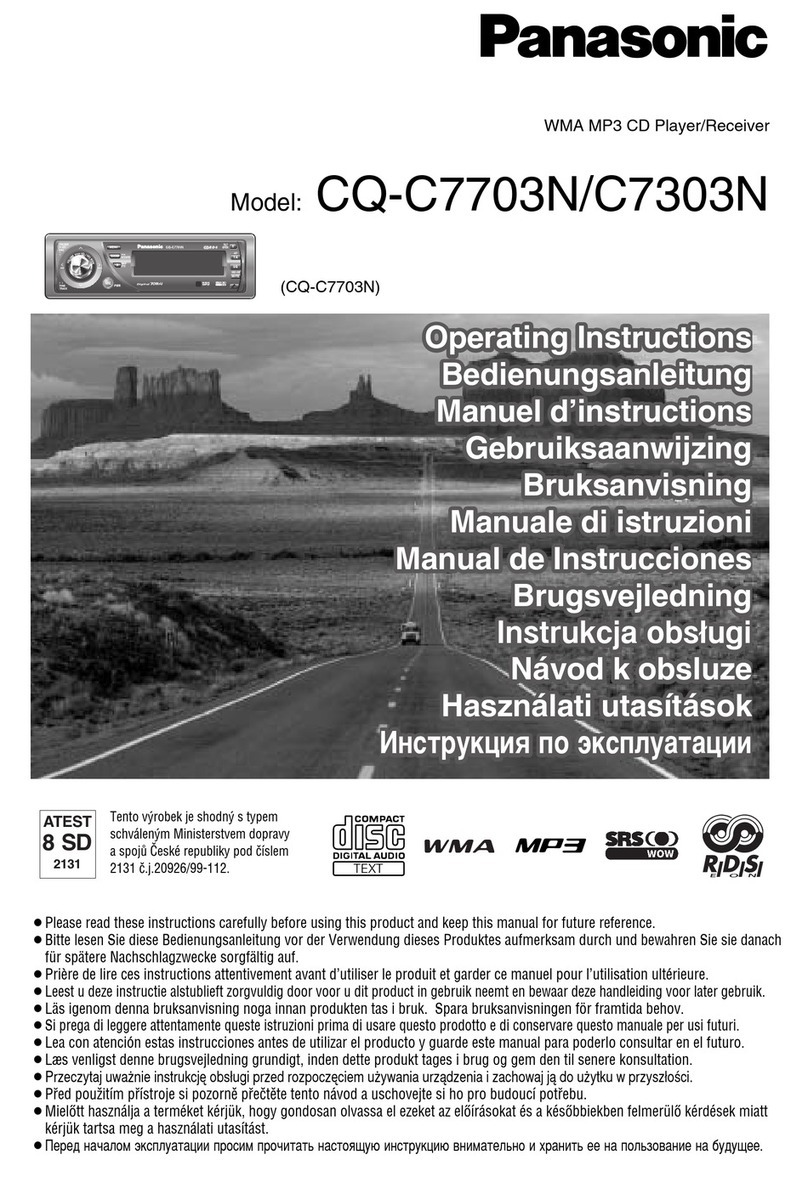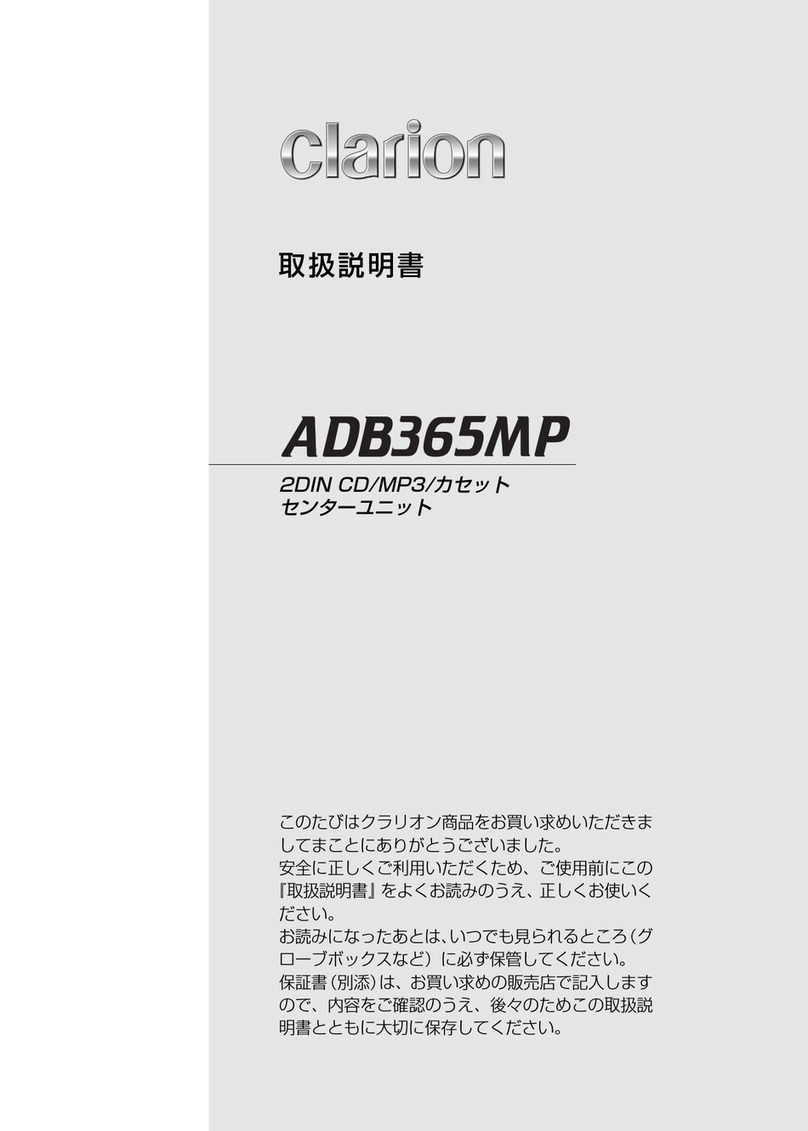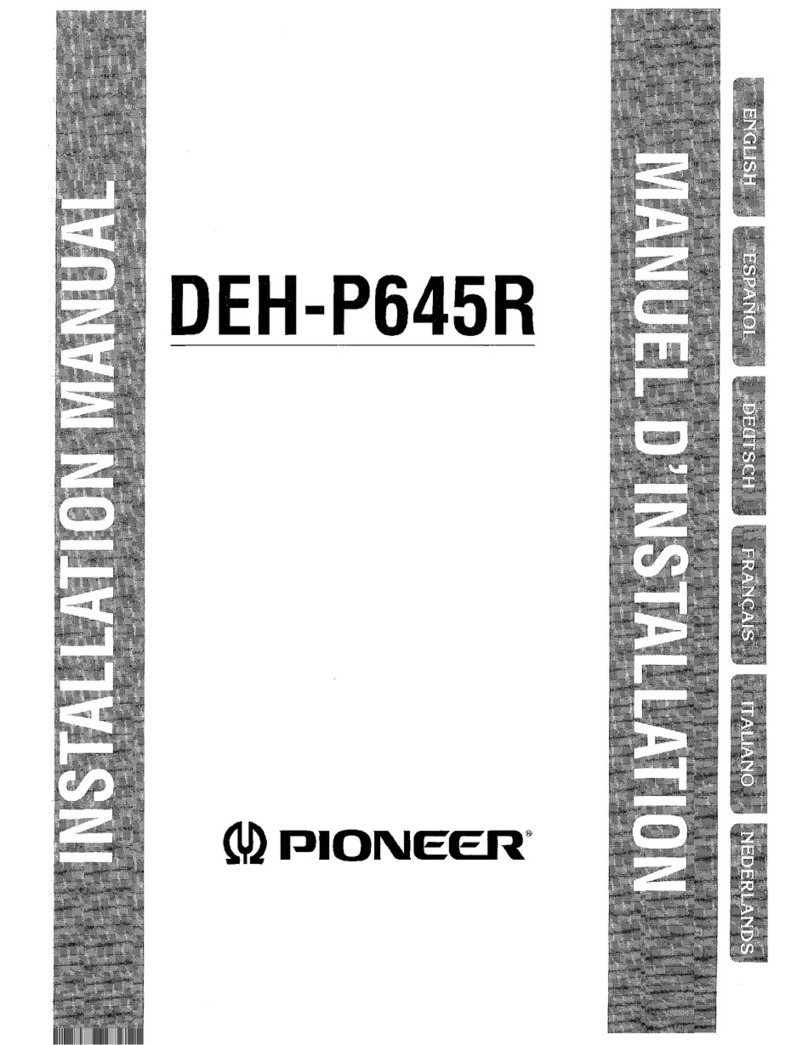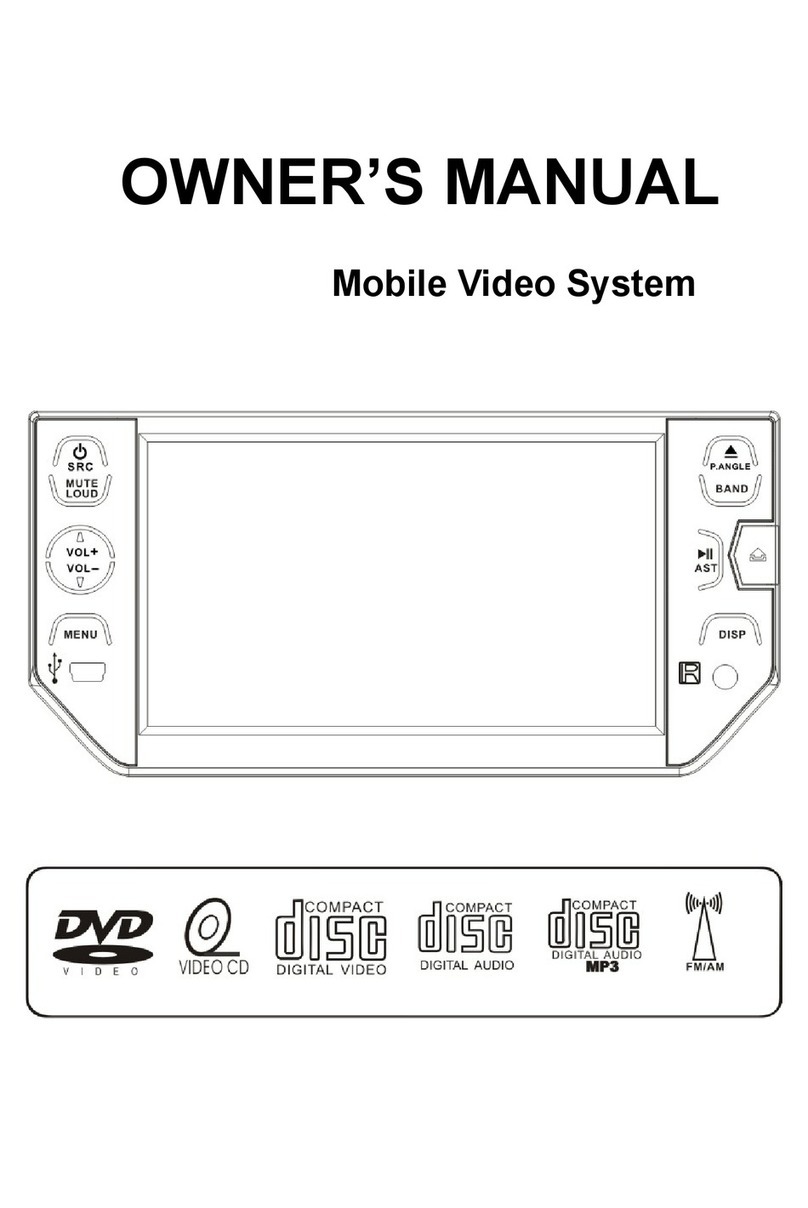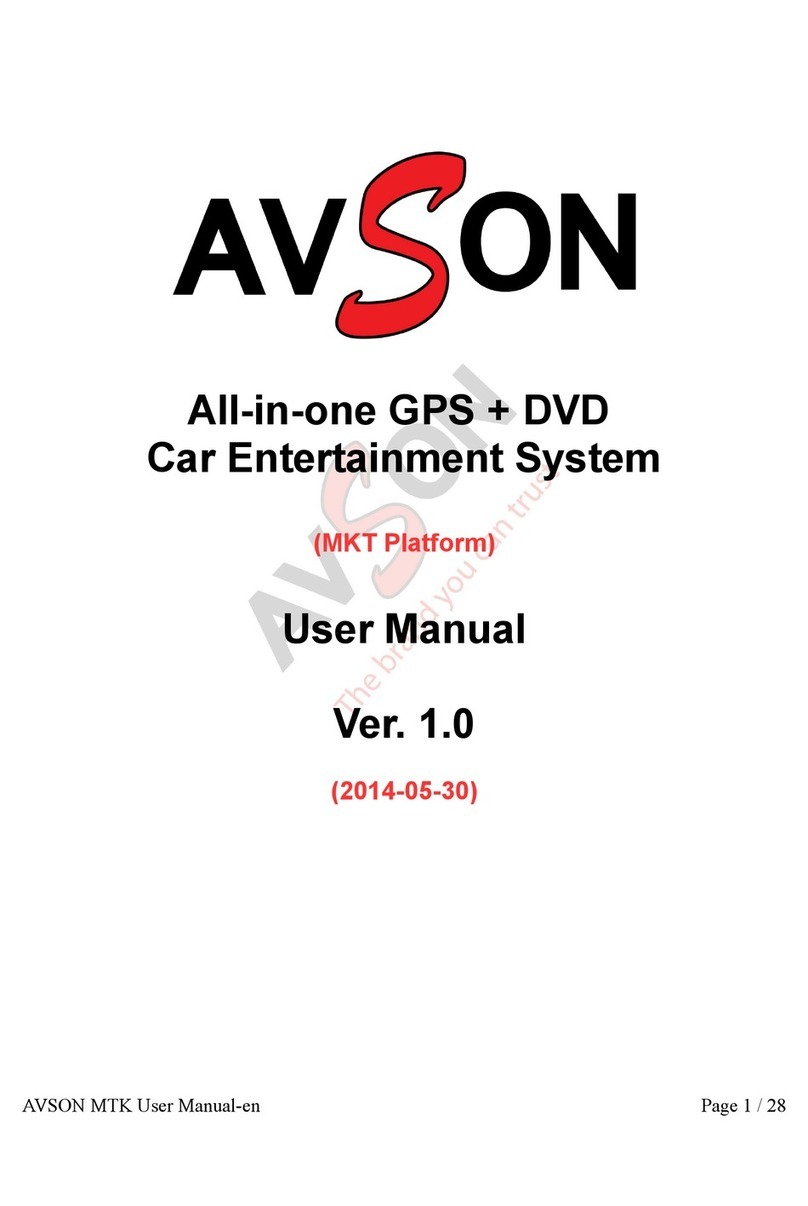
ENGLISH
10
Warped disc
Sticker Sticker residue
Disc Stick-on label
Do not use the following discs:
Maintenance
How to clean the connectors
Frequent detachment will deteriorate the
connectors.To minimize this possibility,
periodically wipe the connectors with a cotton
swab or cloth moistened with alcohol, being
careful not to damage the connectors.
Moisture condensation
Moisture may condense on the lens inside the
CD player in the following cases:
• After starting the heater in the car.
• If it becomes very humid inside the car.
Should this occur, the CD player may
malfunction.In this case, eject the disc and leave
the unit turned on for a few hours until the
moisture evaporates.
How to handle discs
When removing a disc from
its case, press down the center
holder of the case and lift the disc
out, holding it by the edges.
• Always hold the disc by the
edges. Do not touch its recording surface.
When storing a disc into its case, gently insert
the disc around the center holder (with the
printed surface facing up).
• Make sure to store discs into the cases after
use.
To play new discs
New discs may have some rough
spots around the inner and outer
edges. If such a disc is used, this
unit may reject the disc.
To remove these rough spots, rub the edges
with a pencil or ball-point pen, etc.
To keep discs clean
A dirty disc may not play correctly.
If a disc does become dirty, wipe it
with a soft cloth in a straight line
from center to edge.
• Do not use any solvent (for example,
conventional record cleaner, spray, thinner,
benzine, etc.) to clean discs.
Center holder
Connector
EN10-13_KD-G125_126[UN]f.indd 10 10/4/05 11:55:55 AM

